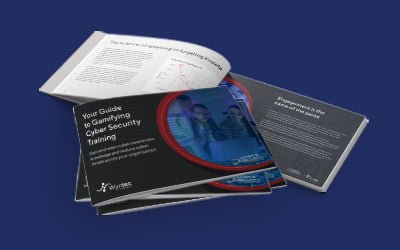Today’s businesses face numerous challenges. Hybrid work has become the new normal, but business has traditionally centred on people working together in an office. We need centralised cloud platform and infrastructure, yet many of us work with legacy systems (including paper-based processes) that cannot adequately support modern work.
Your business needs a way to do more with what it has, but how?
You need to review your people, processes and technology to ensure each work in harmony. Remember, optimisation is about more than just business technology. You need to analyse your people and processes to optimise your processes completely.
Some questions you can ask yourself are:
- What do you have today?
- What can you leverage more effectively?
- Are you doing things efficiently?
- How can you improve what you have in your business today?
I recommend asking these questions about the following areas of your business.
Analyse your licensing costs
Reviewing your software licences and costs is an excellent place to start when optimising your business for 2023. Many of us had to rapidly adopt digital platforms in recent years, which meant that we added to our technology costs, but not always in the most effective way. Now is the time to review your licences and fees to identify opportunities to reduce software expenses.
To get started, you might ask:
- Do we have more licences than necessary? Many companies purchase more licenses than they need, leading to unnecessary expenses. Over-licensing can result from poor planning or a lack of understanding of the licensing terms and regulations associated with the software.
- Are we underutilising licenses? In some cases, businesses may have the necessary licenses but are not using them to their fullest potential. For example, you might use Microsoft Teams for business communication, but are you using all the features available?
- Have we reviewed our cloud consumption? Cloud services can offer a variety of advantages over traditional IT approaches, such as scalability, flexibility and reduced costs. However, proper management and optimisation of cloud consumption are essential to ensure that you make the most of your investment.
By reviewing and optimising your software licences, you can find areas to reduce your licence costs, maximise the value of existing licences and ensure that you take advantage of the latest features and updates.
Take inventory of your hardware
Once you have licences locked down, I recommend reviewing your hardware inventory. Take the time to audit your current equipment and ensure it meets your needs. Start with analysing what you currently have, including warranty and hardware subscriptions and checking whether these are up-to-date and relevant. With this information, you can identify where you need upgrades and replacements and keep up with the changing business technology landscape.
I also recommend assessing your devices’ performance and the issues associated with ageing infrastructure. For example, software updates always require a little bit more power, and over time your hardware might not be able to deliver, creating inefficiencies for your team. So, it might be worth reviewing their viability and checking whether they still meet your performance requirements and if the costs of running and maintaining them are worth it.
Consolidate telephony and collaboration
Your telephony solution is one staple of workplace communication that I recommend revisiting and optimising in 2023. This point is critical if you cannot remember the last time you reviewed your telephony solution costs.
Optimising your telephony solutions could include consolidating your communication apps. For example, you might move your telephony operations to Microsoft Teams Phone, bringing all communication into one application.
A modern telephony system can provide your business with the scalability, efficiency and flexibility needed to keep up with an ever-changing market. By connecting employees to customers, vendors and co-workers, a telephony solution can help reduce operational costs and make it easier to manage customer interactions.
Secure and refine document management
You might have documents stored in various places across your organisation. Multiple versions might exist in your email folders, stored locally on staff computers, or even multiple versions on your cloud platforms. A good document management solution should be able to store all documents in a centralised location that is accessible and secure. It should also provide tools for organisation, searchability, collaboration and tracking changes.
We have recently seen many incidents where companies have collected data, stored it for longer than necessary, and then have the data leaked and exposed in a leak or cyber attack. To improve document management, you need to understand where you keep data – especially for clients, partners and vendors – how you store it and who has access.
Reviewing your document management solution can generate cost savings, improved productivity and security. By streamlining processes and automating specific tasks, you can save time and money while properly organising and securing documents.
Find the pain points in your processes
The final step in preparing your business process optimisation strategy is to look at your processes, including:
- Identifying the key processes: Take a look at the main processes behind your business operation and target these.
- Noting down at least three pain points: Find steps in these processes that take the most time or create the most frustration.
- Documenting the process end-to-end: Map the people and technology involved. Get clear on how it runs, and if you don’t have documentation for it already, then now is the perfect time to do so.
- Defining what works and what does not: As you document each step in your process, consider what already works well and where problems arise.
- Asking if technology can help with these pain points: Remember that business technology’s main purpose is not to replace the process. If you are unclear on how the technology will work, you will deliver a bad result at scale. Instead, implementing technology with purpose will ensure you deploy a successful process.
- Refining further: Process optimisation is an iterative process, not something you do all at once. The final step is refining the process and steps as you work through them with your updates.
Wyntec can support your business optimisation efforts
Creating a modern workplace is more than just leveraging the latest technology; it is how you leverage it.
Much of the technology you already have, such as Microsoft 365, paves the way to improving business outcomes. When you improve collaboration, data accessibility, and digitisation of processes, you create a modern workplace where your team can excel.
Wyntec enables business transformation by combining our knowledge of your sector and business with our technical expertise. Our goal is to create solutions that increase your ability to grow and sustain profits. Visit our Modern Workplace Transformation and business optimisation page for more on our capabilities and offerings.





